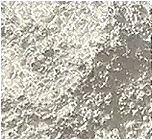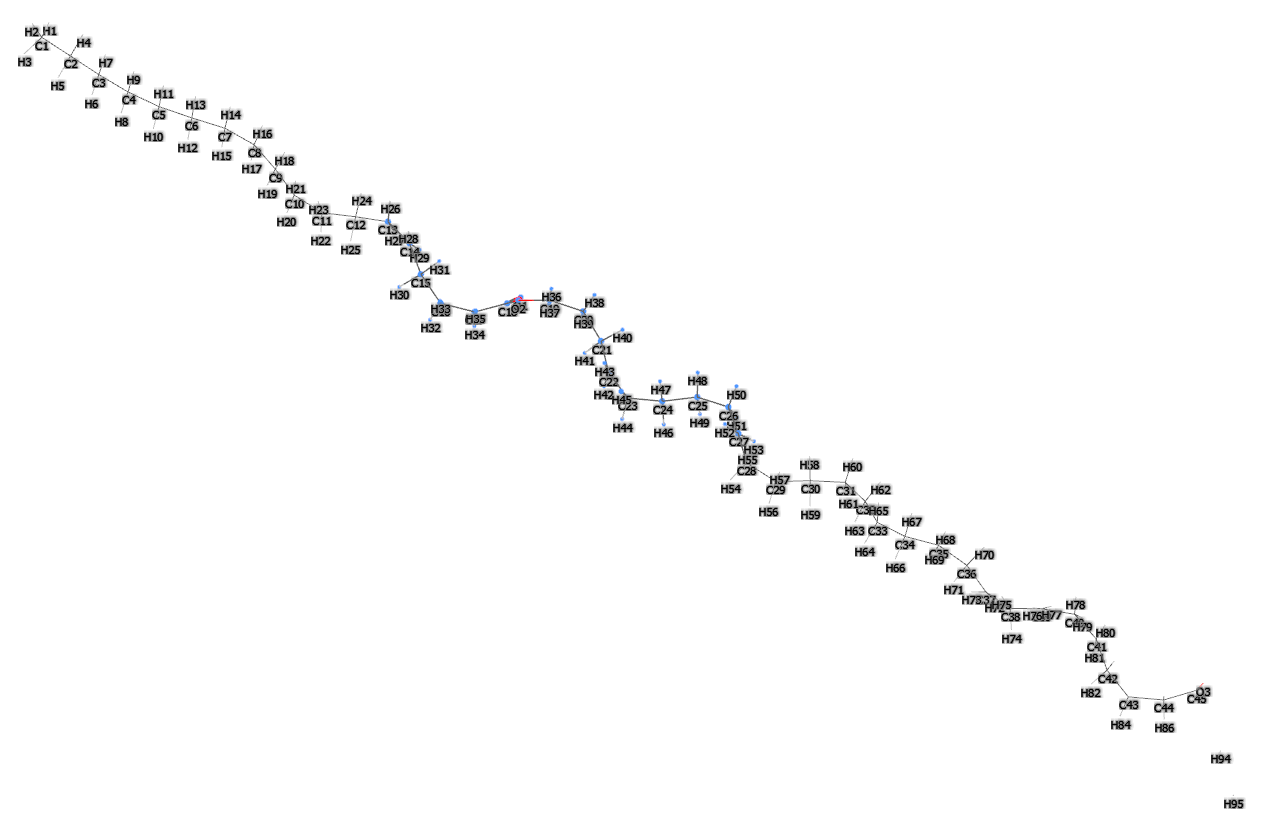![]() Ceramide 1
Ceramide 1
Rating : 8
| Evaluation | N. Experts | Evaluation | N. Experts |
|---|---|---|---|
| 1 | 6 | ||
| 2 | 7 | ||
| 3 | 8 | ||
| 4 | 9 | ||
| 5 | 10 |
Pros:
Skin protective (1) Anti-inflammatory (1)10 pts from AColumn
| Sign up to vote this object, vote his reviews and to contribute to Tiiips.Evaluate | Where is this found? |
| "Descrizione" about Ceramide 1 Review Consensus 10 by AColumn (9336 pt) | 2023-Jan-04 16:10 |
| Read the full Tiiip | (Send your comment) |
Ceramide 1 is a phospholipid, a lipid molecule that belongs to the specific species of ceramides, the main constituents of the human skin's defence barrier and lipids in the stratum corneum where it has the ability to form stable lamellar structures. Ceramide is the central sphingolipid metabolism in the endoplasmic reticulum; it is also a regulator of important cell functions and is involved in pathological processes and metabolic alterations.
It appears in the form of a white powder.

Cosmetics and Pharmaceuticals
Hair conditioning agent. A large number of ingredients with specific purposes can co-exist in a hair shampoo: cleansers, conditioners, thickeners, mattifying agents, sequestering agents, fragrances, preservatives, special additives. However, the indispensable ingredients are the cleansers and conditioners as they are necessary and sufficient for hair cleansing and manageability. The others act as commercial and non-essential auxiliaries such as: appearance, fragrance, colouring, etc. Hair conditioning agents have the task of increasing shine, manageability and volume, and reducing static electricity, especially after treatments such as colouring, ironing, waving, drying and brushing. They are, in practice, dispersing agents that may contain cationic surfactants, thickeners, emollients, polymers. The typology of hair conditioners includes: intensive conditioners, instant conditioners, thickening conditioners, drying conditioners.
Skin conditioning agent - Miscellaneous. Ingredient that has the task of modifying the condition of the skin when it is damaged or dry by reducing its flakiness and restoring its elasticity.
In a study to evaluate the potential water retention capacity of an oil-water emulsion, Ceramide 1 was shown to exert a beneficial synergistic effect on the biochemical properties of the skin, such as skin hydration and protection from irritation by surfactants (1). It retains the skin's moisture in the stratum corneum and its moisturising effect produces an anti-ageing effect.
It acts as a messenger in the human body in vitamin D34 and in various cytokines.
For more information:


- Formula molecolare C63H125NO6
- Peso molecolare 992.7
- CAS 100403-19-8 179186-46-0
- UNII 5THT33P7X7
- EC Number
- DSSTox Substance ID
- IUPAC [27-oxo-27-[[(2S,3S,4R)-1,3,4-trihydroxyoctadecan-2-yl]amino]heptacosyl] octadecanoate
- InChl=1S/C63H125NO6/c1-3-5-7-9-11-13-15-17-28-32-36-40-44-48-52-56-62(68)70-57-53-49-45-41-37-33-30-27-25-23-21-19-18-20-22-24-26-29-31-35-39-43-47-51-55-61(67)64-59(58-65)63(69)60(66)54-50-46-42-38-34-16-14-12-10-8-6-4-2/h59-60,63,65-66,69H,3-58H2,1-2H3,(H,64,67)/t59-,60+,63-/m0/s1
- InChl Key MIUIRGGKIICMBP-NFOZDHADSA-N
- SMILES CCCCCCCCCCCCCCCCCC(=O)OCCCCCCCCCCCCCCCCCCCCCCCCCCC(=O)NC(CO)C(C(CCCCCCCCCCCCCC)O)O
- MDL number
- PubChem Substance ID
- SCHEMBL18323049
- RTECS
- RXCUI 1364385
Synonyms
[27-oxo-27-[[(2S,3S,4R)-1,3,4-trihydroxyoctadecan-2-yl]amino]heptacosyl] octadecanoate
References___________________________________________________________________
(1) Huang HC, Chang TM. Ceramide 1 and ceramide 3 act synergistically on skin hydration and the transepidermal water loss of sodium lauryl sulfate-irritated skin. Int J Dermatol. 2008 Aug;47(8):812-9. doi: 10.1111/j.1365-4632.2008.03687.x.
| Sign up to vote this object, vote his reviews and to contribute to Tiiips.EvaluateClose | (0 comments) |
| "Ceramide 1 studies" about Ceramide 1 Review Consensus 10 by AColumn (9336 pt) | 2022-Oct-30 21:26 |
| Read the full Tiiip | (Send your comment) |
Compendium of the most significant studies with reference to properties, intake, effects.
Millner A, Running L, Colon-Rosa N, Aga DS, Frasor J, Atilla-Gokcumen GE. Ceramide-1-Phosphate Is Involved in Therapy-Induced Senescence. ACS Chem Biol. 2022 Apr 15;17(4):822-828. doi: 10.1021/acschembio.2c00216.
Abstract. Sphingolipids are key signaling lipids and their dysregulation has been associated with various cellular processes. We have previously shown significant changes in sphingolipids in therapy-induced senescence, a state of cell cycle arrest as a response to chemotherapy, including the accumulation of ceramides, and provided evidence suggesting that ceramide processing is important for this process. Herein, we conducted a focused small molecule inhibitor screen targeting the sphingolipid pathway, which highlighted a new lipid regulator of therapy-induced senescence. Among the inhibitors tested, the inhibition of ceramide kinase by NVP-231 reduced the levels of senescent cells. Ceramide kinase knockdown exhibited similar effects, strongly supporting the involvement of ceramide kinase during this process. We showed that ceramide-1-phosphate was upregulated in therapy-induced senescence and that NVP-231 reduced ceramide-1-phosphate levels in different cell line models of therapy-induced senescence. Finally, ceramide-1-phosphate addition to NVP-231-treated cells reversed the effects of NVP-231 during senescence. Overall, our results identify a previously unknown lipid player in therapy-induced senescence and highlight a potential targetable enzyme to reduce the levels of therapy-induced senescent cells.
Hoeferlin LA, Wijesinghe DS, Chalfant CE. The role of ceramide-1-phosphate in biological functions. Handb Exp Pharmacol. 2013;(215):153-66. doi: 10.1007/978-3-7091-1368-4_8.
Abstract In mammalian cells, cermide-1-phosphate (C1P) is produced via the ATP-dependent mechanism of converting ceramide to C1P by the enzyme, ceramide kinase (CERK). CERK was first described as a calcium-stimulated lipid kinase that co-purified with brain synaptic vesicles, and to date, CERK is the only identified mammalian enzyme known to produce C1P in cells. C1P has steadily emerged as a bioactive sphingolipid involved in cell proliferation, macrophage migration, and inflammatory events. The recent generation of the CERK knockout mouse and the development of CERK inhibitors have furthered our current understanding of CERK-derived C1P in regulating biological processes. In this chapter, the history of C1P as well as the biological functions attributed to C1P are reviewed.
Rivera IG, Ordoñez M, Presa N, Gomez-Larrauri A, Simón J, Trueba M, Gomez-Muñoz A. Sphingomyelinase D/ceramide 1-phosphate in cell survival and inflammation. Toxins (Basel). 2015 Apr 29;7(5):1457-66. doi: 10.3390/toxins7051457.
Abstract Sphingolipids are major constituents of biological membranes of eukaryotic cells. Many studies have shown that sphingomyelin (SM) is a major phospholipid in cell bilayers and is mainly localized to the plasma membrane of cells, where it serves both as a building block for cell architecture and as a precursor of bioactive sphingolipids. In particular, upregulation of (C-type) sphingomyelinases will produce ceramide, which regulates many physiological functions including apoptosis, senescence, or cell differentiation. Interestingly, the venom of some arthropodes including spiders of the genus Loxosceles, or the toxins of some bacteria such as Corynebacterium tuberculosis, or Vibrio damsela possess high levels of D-type sphingomyelinase (SMase D). This enzyme catalyzes the hydrolysis of SM to yield ceramide 1-phosphate (C1P), which promotes cell growth and survival and is a potent pro-inflammatory agent in different cell types. In particular, C1P stimulates cytosolic phospholipase A2 leading to arachidonic acid release and the subsequent formation of eicosanoids, actions that are all associated to the promotion of inflammation. In addition, C1P potently stimulates macrophage migration, which has also been associated to inflammatory responses. Interestingly, this action required the interaction of C1P with a specific plasma membrane receptor, whereas accumulation of intracellular C1P failed to stimulate chemotaxis. The C1P receptor is coupled to Gi proteins and activates of the PI3K/Akt and MEK/ERK1-2 pathways upon ligation with C1P. The proposed review will address novel aspects on the control of inflammatory responses by C1P and will highlight the molecular mechanisms whereby C1P exerts these actions.
Hait NC, Maiti A. The Role of Sphingosine-1-Phosphate and Ceramide-1-Phosphate in Inflammation and Cancer. Mediators Inflamm. 2017;2017:4806541. doi: 10.1155/2017/4806541.
Abstract. Inflammation is part of our body's response to tissue injury and pathogens. It helps to recruit various immune cells to the site of inflammation and activates the production of mediators to mobilize systemic protective processes. However, chronic inflammation can increase the risk of diseases like cancer. Apart from cytokines and chemokines, lipid mediators, particularly sphingosine-1-phosphate (S1P) and ceramide-1-phosphate (C1P), contribute to inflammation and cancer. S1P is an important player in inflammation-associated colon cancer progression. On the other hand, C1P has been recognized to be involved in cancer cell growth, migration, survival, and inflammation. However, whether C1P is involved in inflammation-associated cancer is not yet established. In contrast, few studies have also suggested that S1P and C1P are involved in anti-inflammatory pathways regulated in certain cell types. Ceramide is the substrate for ceramide kinase (CERK) to yield C1P, and sphingosine is phosphorylated to S1P by sphingosine kinases (SphKs). Biological functions of sphingolipid metabolites have been studied extensively. Ceramide is associated with cell growth inhibition and enhancement of apoptosis while S1P and C1P are associated with enhancement of cell growth and survival. Altogether, S1P and C1P are important regulators of ceramide level and cell fate. This review focuses on S1P and C1P involvement in inflammation and cancer with emphasis on recent progress in the field.
Gómez-Muñoz A, Gangoiti P, Granado MH, Arana L, Ouro A. Ceramide-1-phosphate in cell survival and inflammatory signaling. Adv Exp Med Biol. 2010;688:118-30. doi: 10.1007/978-1-4419-6741-1_8.
Abstract An important metabolite of ceramide is ceramide-1-phosphate (C1P). This lipid second messenger was first demonstrated to be mitogenic for fibroblasts and macrophages and later shown to have antiapoptotic properties. C1P is also an important mediator of the inflammatory response, by stimulating the release of arachidonic acid through activation of group IVA cytosolic phospholipase A2, the initial rate-limiting step of eicosanoid biosynthesis. C1P is formed from ceramide by the action of a specific ceramide kinase (CerK), which is distinct from the sphingosine kinases that synthesize sphingosine-1-phosphate. CerK is specific for natural ceramides with the erythro configuration in the base component and esterified to long-chain fatty acids. CerK can be activated by different agonists, including interleukin 1-beta, macrophage colony stimulating factor, or calcium ions. Most of the effects of C1P so far described seem to take place in intracellular compartments; however, the recent observation that C1P stimulates cell migration implicates a specific plasma membrane receptor that is coupled to a G(i) protein. Therefore, C1P has a dual regulatory capacity acting as an intracellular second messenger to regulate cell survival, or as extracellular receptor ligand to stimulate chemotaxis.
Hinkovska-Galcheva V, Shayman JA. Ceramide-1-phosphate in phagocytosis and calcium homeostasis. Adv Exp Med Biol. 2010;688:131-40. doi: 10.1007/978-1-4419-6741-1_9.
Abstract Sphingolipids are well established sources of important signaling molecules. For example, ceramide (Cer) has been described as a potent inhibitor of cell growth and inducer of apoptosis. In contrast, ceramide-1-phosphate (C1P) has been reported to have mitogenic properties and to inhibit apoptosis. Our understanding of the distinct biological roles of C1P in the regulation of DNA synthesis, inflammation, membrane fusion and intracellular Ca2+ increase has rapidly expanded. C1P is a bioactive sphingolipid formed by the phosphorylation of ceramide catalyzed by ceramide kinase (CERK). This chapter specifically focuses on the role of C1P in phagocytosis and Ca2+ homeostasis. Studies of the metabolism of C1P during phagocytosis, may lead to a better understanding of its role in signaling. Potentially, the inhibition of CERK and C1P formation may be a therapeutic target for inflammation.
Berwick ML, Dudley BA, Maus K, Chalfant CE. The Role of Ceramide 1-Phosphate in Inflammation, Cellular Proliferation, and Wound Healing. Adv Exp Med Biol. 2019;1159:65-77. doi: 10.1007/978-3-030-21162-2_5.
Abstract The phospho-sphingolipid, ceramide 1-phosphate (C1P), has long been implicated as a dynamic bioactive agent. Over two decades of research has begun to characterize various regulatory roles for C1P from mammalian inflammatory response and wound healing to cellular proliferation and survival. As a metabolite of the intricately balanced "sphingolipid rheostat", C1P stands as a crucial physiological regulator of both upstream and downstream mechanisms. This chapter serves as an overview of established and implicated roles for C1P in cellular processes vital to diseases and mammalian physiology. Additionally, we discuss potential clinical roles for C1P in cancer treatment, wound therapy, and pre-disease diagnosis. While many questions remain regarding C1P metabolism and the extent of signaling factors targeted by this bioactive lipid, new technologies and methodologies show great promise to discern key targets, signaling pathways, and physiologies regulated by C1P.
| Sign up to vote this object, vote his reviews and to contribute to Tiiips.EvaluateClose | (0 comments) |
Read other Tiiips about this object in __Italiano (2)
Component type: Natural Main substances: Last update: 2022-10-30 19:41:45 | Chemical Risk: |


